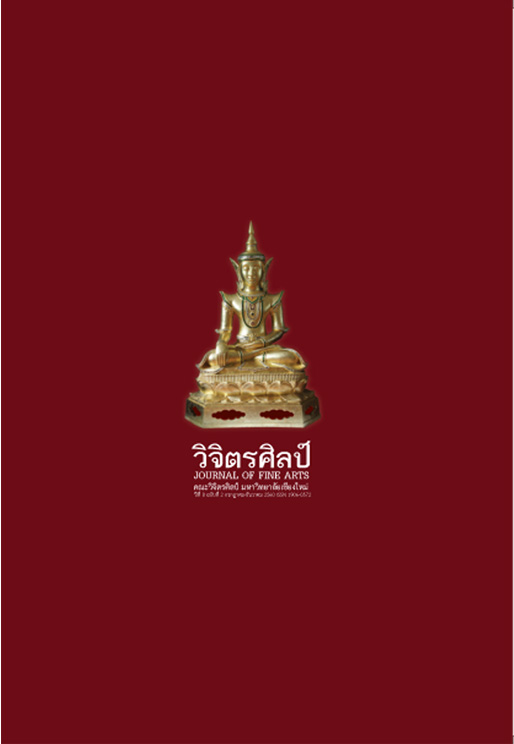สัญญะแห่งพระราชอำนาจและรสนิยมสมัยใหม่ในพระบรมสาทิสลักษณ์รัชกาลที่ 5 โดยศิลปินยุโรป
Main Article Content
Abstract
บทความนี้ตั้งคำถามและตีความกระบวนการการแสดงภาพแทนความจริง (visual representation) ของพระบาทสมเด็จพระจุลจอมเกล้าเจ้าอยู่หัวด้วยสื่อที่หยิบยืมมาจากวัฒนธรรมตะวันตก คือ จิตรกรรมภาพเหมือน ในการนำเสนอและยืนยันพระราชอำนาจและสถานะความเป็นกษัตริย์ (kingship) ของพระองค์ท่ามกลางการเปลี่ยนแปลงและการท้าทายจากทั้งภายนอกและภายในราชอาณาจักรสยามช่วงครึ่งหลังพุทธศตวรรษที่ 25 โดยบทความเน้นประเด็นการวิเคราะห์ไปที่พระบรมฉายาสาทิสลักษณ์และพระบรมสาทิสลักษณ์ของพระบาทสมเด็จพระจุลจอมเกล้าเจ้าอยู่หัวจำนวนสามองค์โดยจิตรกรชาวยุโรปประดิษฐาน ณ พระที่นั่งจักรีมหาปราสาท (ราวพ.ศ. 2474-2482) พระที่นั่งอุทยานภูมิเสถียร พระราชวังบางปะอิน (พ.ศ. 2441) และพระที่นั่งบรมพิมาน ในพระบรมมหาราชวัง (พ.ศ. 2451) นอกจากที่พระบรมฉายาสาทิสลักษณ์และพระบรมสาทิสลักษณ์ทั้งสามองค์จะถ่ายทอดความเหมือนทางกายภาพที่เปลี่ยนแปลงไปตามกาลเวลาแล้ว ยังสะท้อนถึงการเปลี่ยนแปลงในการแสดงสัญลักษณ์แห่งพระราชอำนาจ การนำเสนออัตลักษณ์ของความเป็นกษัตริย์แห่งสยามในบริบทของโลกใหม่ภายใต้การกำหนดทิศทางโดยมหาอำนาจตะวันตก และการสะท้อนรสนิยมวัฒนธรรมการบริโภคตามอย่างตะวันตกของรัชกาลที่ 5 ที่แทรกซึมอยู่ในราชสำนักและแวดวงชนชั้นผู้นำของสยาม
Regal Symbols and Modern(ised) Taste in the State Portraits of King Chulalongkorn by European Painters
Similar to his other royal projects, portraits of King Chulalongkorn (Rama V) of Thailand (r. 1868-1910) were executed under a grand scheme of modernization and an ideology of westernization which dominated the Thai society during the late nineteenth century. This paper investigates the pattern of regal symbols in his royal portraits painted by European artists on different occasions (in 1885, 1897 and 1907), two of which were painted by the notable European painters namely, Michele Gordigiani and Carolus-Duran. These portraits significantly display the King’s abstract principles which he stood for, i.e. modernization and westernization. Rama V’s western aspirations were reflected in the changes of the royal symbols through the ancient Royal Regalia and Royal Decorations to the sartorial elegance of military uniforms adopted from Europe, as seen among his European monarchical counterparts.


